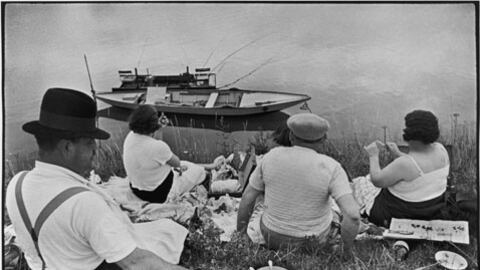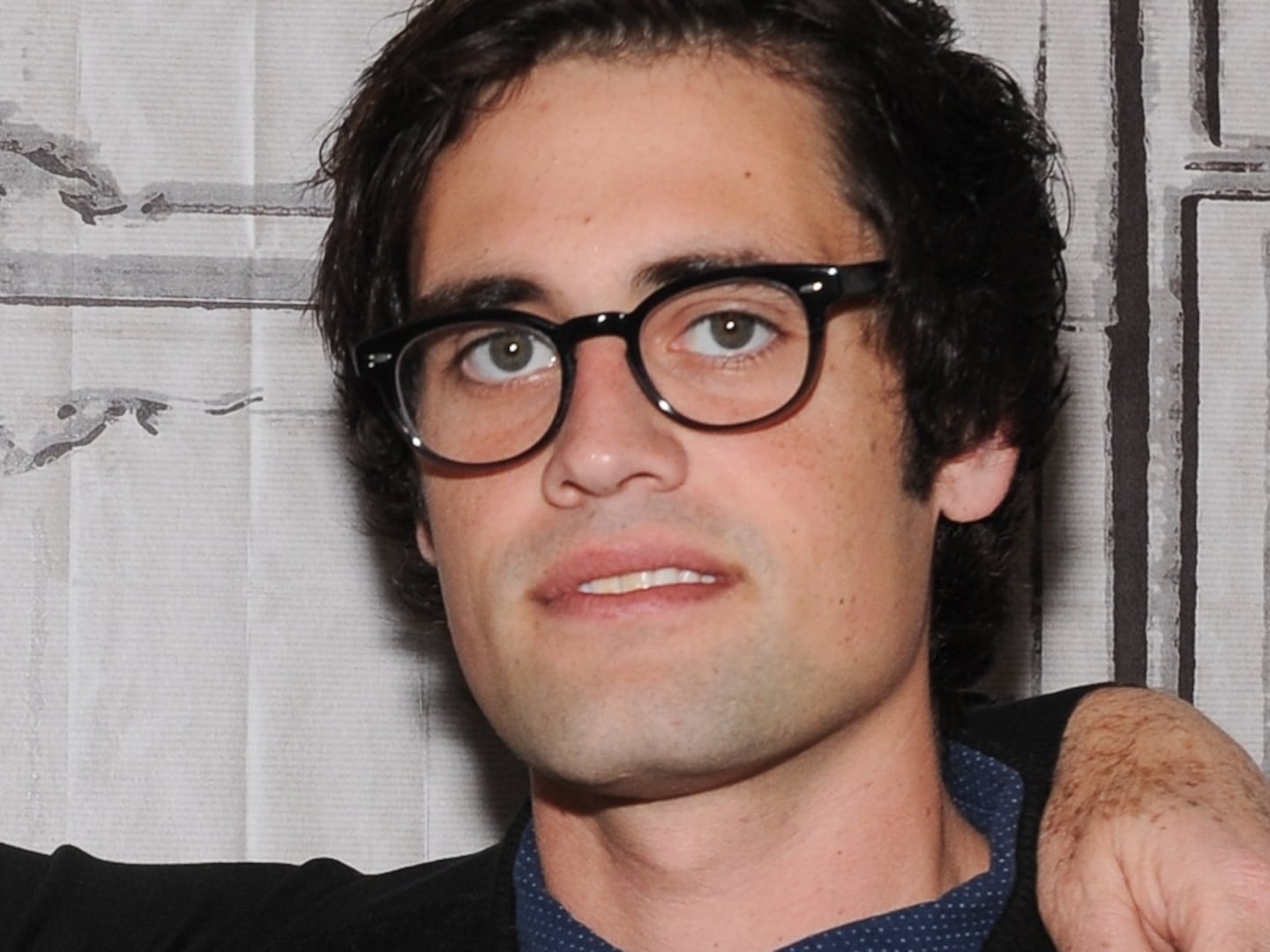“The decisive moment,” a term etched deep into the bedrock of photojournalistic practice, is synonymous with its author, Henri Cartier-Bresson, one of the towering figures in the history of photography. In 1952, Cartier-Bresson articulated the underlying meaning of the concept in his book of the same name: “To me, photography is the simultaneous recognition, in a fraction of a second, of the significance of an event as well as the precise organization of forms [as they are perceived visually] which give that event its proper expression.”
Click Image to View Our Gallery of "Henri Cartier-Bresson: The Modern Century"

I have always interpreted “the decisive moment” to be one in which an equal balance is struck between activity and observation: the photographer recognizes something as it transpires in real time and choreographs an immediate response with the appropriate visual geometry locking in place in the frame and the right exposure of light to film at play, rendering the subject and the image, like two coils of DNA, inextricably linked. The result, then, is not just a moment in time caught by the camera but the timelessness of the moment expressed in visual form. Certainly Cartier-Bresson’s best-known images are a testament to this idea.
“ Henri Cartier-Bresson: The Modern Century,” which opens at The Museum of Modern Art on April 11 and runs through June 28, is the first major retrospective of the photographer’s work in the United States in more than 30 years, with 300 photographs made between 1929 and 1989. Given the place occupied by Cartier-Bresson in the pantheon of 20th century photographers, the exhibition provides a welcome opportunity to measure his reputation against the sweep and scope of his lifework.
• Art Beast: The Best of Art, Photography & DesignThat Cartier-Bresson established the idea of the decisive moment as a photographic trope is a worthy distinction, but his role as one of the four founders of Magnum, the cooperative photo agency, is of greater historic significance. Magnum was established by Cartier-Bresson, Robert Capa, George Rodger and David “Chim” Seymour in 1947 to wrest control of photographic subject matter from the magazines and, also, to determine where, and the manner in which, it would be presented. The roster of distinguished Magnum photographers over the years includes, among many others, Cornell Capa (who coined the term, “the concerned photographer,” and who also founded the International Center of Photography), Bruce Davidson, Elliott Erwitt, Joseph Koudelka, Susan Meiselas, James Nachtwey, and Gilles Peress. Without a doubt, the body of images produced by Magnum photographers set the gold standard for photojournalism internationally for more than a half century.
To say that Cartier-Bresson was a photojournalist does not take into full account the scope of his ambition or his background. Initially, he wanted to be a painter and, throughout his life, he never stopped drawing. Born into a wealthy family in 1908, his interest in art was nurtured from an early age.
Cartier-Bresson grew up in a fashionable part of Paris and spent his childhood visiting one family chateau or another. He received his formal education at the Lycée Condorcet (a school attended before him by Cocteau, Proust, and Valéry).
The Paris in which Cartier-Bresson came of age was undergoing rapid industrial change and, also, dizzying artistic foment. Not only was it the capital of Western art but the center of the Surrealist movement.
Peter Galassi, the chief curator of photography at The Museum of Modern Art, who organized the exhibition, writes in the accompanying catalogue about photography in that period in Paris between the world wars: “photography transforms what it describes; the art of photography lies in mastering that transformation. The 1920s were full of gleeful shouts of artful control-- unfamiliar angles of view, graphic patterns of light and shade, abruptly arrested motion, striking amputations of form, extreme close-ups. The pictorial vocabulary of what came to be called The New Vision dovetailed beautifully with the animated graphics of Cubism’s flat field.“
Ilse Bing, Andre Kertesz, Germaine Krull, and Man Ray were among the avant-garde photographers Cartier-Bresson first encountered as a young man in Paris when he was brought into the surrealist circle in 1928. In the 1930s, Cartier-Bresson tried his hand at serious filmmaking. In New York for a time he was part of a documentary film group led by Paul Strand. Back in Paris he worked on a film loosely supervised by Jean Renoir called Life Is Ours, commissioned by the Communist Party for the elections of May 3, 1936 in France. He was an assistant director on two Renoir films: A Day in the Country (1936) and The Rules of the Game (1939), in which he also had a small role as a British servant.
During the Spanish Civil War, he made three films for the Republican cause, which “confirmed his commitment to the Left, despite his privileged background.” And at the end of WWII, he made The Return, a film that showed the repatriation of former prisoners of war. He shot one of his most famous photographs, “Dessau, Germany, April 1945,” during the filming of an improvised outdoor interrogation in which a woman who had been betrayed by the Gestapo vehemently denounced the informer who had given her away.
By the time Cartier-Bresson co-founded Magnum in 1947, it “didn’t mean leaving a coherent artistic sphere for an alien job,” writes Galassi. “And being a photojournalist didn’t mean being just a photographer. It meant being a student, a diplomat, a traveler, an investigator, a reporter, a historian.”
In 1948, Cartier-Bresson was in India and visited Gandhi moments before he died. His coverage of Gandhi’s death was published in Life, among other publications, and vaulted him to a new level of recognition in the world of photojournalism. His coverage of the post-war transformation of Asia over several years in the late 1940s exemplified the reputation he would gain as a photojournalist for “being in the right place at the right time.”
The broad sweep of Cartier-Bresson’s work—from circumstances and events of historic weight across the globe for over 25 years to vignettes of an intimate and poetic nature—is daunting. While he never lost his sophisticated eye or the intelligence behind his photographic choices, it is clear that he traveled a distance from the artistic preoccupations of his early days in Paris, when “the great pleasure for my Leica” he once recalled, “was to have the spare elements of a collage suddenly jump from the street to the lens.” His focus as a mature photographer turned to the reportorial importance of his subject matter.
It was a transition hard earned. During World War II, Cartier-Bresson spent three years in German labor camp. In his obituary in The New York Times in 2004, he was quoted as having said of the experience: "For a young bourgeois with Surrealist ideas, breaking stone and working in a cement factory was a very good lesson."
Perhaps not a decisive moment, but a defining one.
Plus: Check out Art Beast, for galleries, interviews with artists, and photos from the hottest parties.
Philip Gefter writes about photography for The Daily Beast. He previously wrote about the subject for The New York Times. His book of essays, Photography After Frank, was recently published by Aperture. He is currently producing a feature-length documentary on Bill Cunningham of the Times, and working on a biography of Sam Wagstaff.






